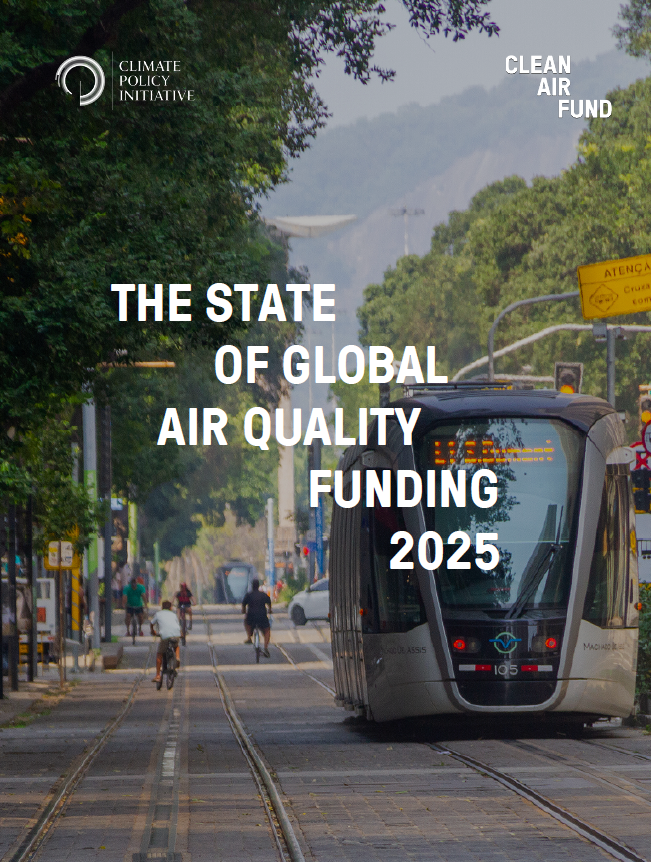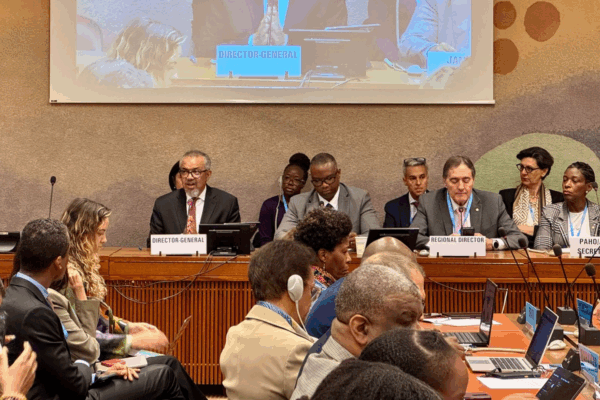Top 10 donors
Below are the ten development finance institutions (DFIs) funding outdoor air quality projects between 2019–2023. The Japan International Cooperation Agency (JICA) and Asian Development Bank (ADB) provided two-thirds of global outdoor air quality funding.
| Ranking | 2018–2022 ranking | Name | Type | Value ($ million) | Share of total (%) |
| 1 | 1 | Japan International Cooperation Agency | Bilateral DFI | 7,218 | 44% |
| 2 | 2 | Asian Development Bank | Multilateral DFI | 3,858 | 23% |
| 3 | 8 | KfW Group (Germany) | Bilateral DFI | 1,090 | 7% |
| 4 | 4 | Export-Import Bank of Korea (Korea Eximbank) | Export Credit Agency (ECA) | 695 | 4% |
| 5 | 5 | World Bank Group | Multilateral DFI | 691 | 4% |
| 6 | 3 | Government of Canada | Government | 585 | 4% |
| 7 | 6 | European Bank for Reconstruction and Development | Multilateral DFI | 497 | 4% |
| 8 | 7 | Asian Infrastructure Investment Bank | Multilateral DFI | 380 | 3% |
| 9 | 9 | Government of Germany | Government | 204 | 2% |
| 10 | 10 | Agence Française de Développement / Proparco (France) | Bilateral DFI | 171 | 1% |
Why do funders struggle to prioritise clean air?
Insights from qualitative interviews with funders revealed their key barriers to investing in projects tackling air pollution within their wider funding portfolios:
Air quality is not a central objective
Multilateral development banks often require projects to be aligned with the Paris Agreement and measure greenhouse gas reductions, but there is no similar requirement for air quality. A perceived lack of demand from low- and middle-income countries for air quality financing may also fuel this de-prioritisation. However, this lack of demand may be affected by the complexity of the development challenges that these countries face, coupled with limited capacity or technical assistance to embed air quality into projects focusing on sectors that are related to air quality but receive more funding, such as health.
Siloed approach to climate and development agendas
Air pollution is often overlooked when funders take a siloed approach to sustainable development and climate action within sectors such as industry, agriculture and waste. There is significant opportunity to introduce air quality as a co-benefit of sector-focused projects that primarily target climate mitigation or adaptation. This Air Quality Toolkit for Development Finance Institutions provides concrete steps that financing institutions can take to integrate air quality as a co-benefit of projects supported by bilateral and multilateral contributions.
Lack of awareness of the impacts of air quality
Understanding of the human and biodiversity impacts of air quality varies from country to country, and donor agency to donor agency. This is especially true when considering super pollutants such as black carbon. Increasing public and funder awareness of the risks of both air pollution and super pollutants are foundational for increasing public support and demand for air quality action.
Lack of reliable, current air quality data and monitoring
Air quality data and monitoring, both on the funder’s side and in recipient countries, needs to be strengthened. As many as 39% of governments do not measure their country’s air quality, which is an important step towards establishing baseline readings of air pollution levels. Reliable source and emissions data are needed to identify which sectors contribute the most to air pollution so that effective, efficient pollution-reduction strategies can be developed.
Finance and technical resource constraints
Interviews highlighted financial and technical resources are limited, especially for MDBs and development agencies tasked with allocating dedicated funding to enhance or scale up air quality projects. Prospective recipient countries face the same challenge, with interviewees stating that as there usually is no one single ministry that is responsible for air pollution matters, there tends to be no centralised budget either.
Recommendations
What can funders do to start investing in clean air to maximise their efforts? See our actions for governments and DFIs.



